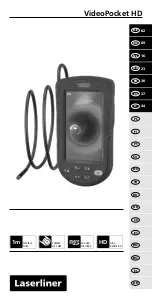
1
SECTION 1: INTRODUCTION
BEFORE YOU BEGIN
All personnel testing optical fibers should be adequately trained in the field of fiber optics before using any fiber optic test equipment.
If the user is not completely familiar with testing fiber optics, they should seek competent training. Such training can be acquired from
a variety of sources, such as local hands-on training classes or online courses.
Optical Channel Monitors (OCM) are used to take incoming signals from Dense Wave Division Multiplexers (DWDM), and split these
signals into separate channels based on the grid of frequencies/wavelengths defined in the ITU-T Rec. G.671 standard. The output
power of each channel is measured and plotted on a graph.
DWDM systems typically use singlemode fibers as the physical medium, and singlemode lasers for transmission. As such,
technicians working with DWDM systems should follow industry standard laser safety procedures to protect their eyes from
accidental exposure to the high-intensity laser outputs of DWDM transmitters.
The OCM-C from OWL is capable of measuring 96 DWDM channels from 191.30 to 196.05 Terahertz, using 50 Gigahertz spacing.
Each of these channels are measured for optical power levels, which are compared to user-definable minimum and maximum power
levels (useful for determining PASS/FAIL). Captured data is then plotted on a bar graph on the color LCD display – each channel
shows different colors to denote whether the signal is too high, too low, or within acceptable power levels.
Users can also choose specific ranges of channels to scan, toggle views between hertz and wavelength, and choose whether to use
frequency or wavelength for channel numbering (lowest value is channel 1). Two cursors are available so users can zoom in on a
specific range of channels for closer inspection.
Scan data can be stored in permanent memory, which can be recalled on the LCD display and downloaded into our OCM software.
The color LCD display implements state-of-the-art display technology that “flips” the display between portrait or landscape mode
automatically simply by rotating the device 90°.
Powering the OCM-C is a re-chargeable Lithium-polymer battery that allows for
hours of normal usage.
up to 20
Throughout this manual you will find various symbols that assist with understanding the procedures outlined in this manual. Below is
a list of these symbols and a short description of their purpose:
Helpful tip
Cautionary information
Potentially dangerous condition or operation
ABOUT THIS MANUAL






































